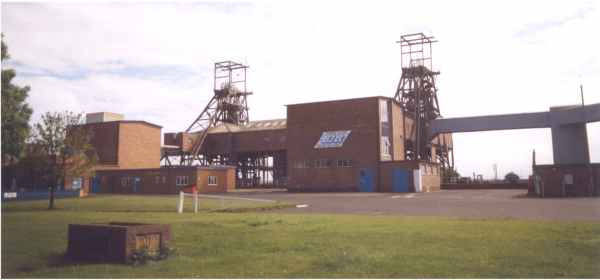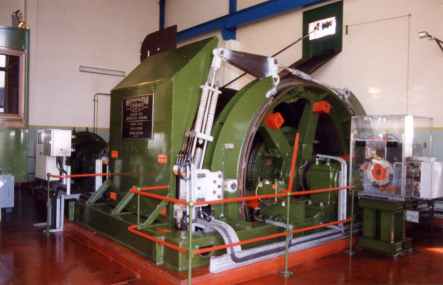 |
Ellington Colliery
Background
Once adjoined and combined with the former Lynmouth Colliery, Ellington Colliery is positioned 27 km north of Newcastle-upon-Tyne on the east coast. Opened in 1909, Ellington has exploited a number of coal seams, working exclusively in seams which run under the North Sea.
Closed by British Coal in February 1994, the mine was maintained until acquired by RJB Mining. Shortly after, in 1995, work at the mine recommenced.
This photograph shows the pithead baths at Ellington Colliery as they were in 1936. (Click to see full image)
Photograph from "A Century of Struggle"
See our Further Reading page for details on how to obtain a copy.
Ellington is currently working on three seams, out of the five covered by the mine's licence. These are Main, Yard, and Brass Thill seams, with the High Main and Combined High Main / Main being previously declared exhausted by British Coal.
Since Ellington works in a remote area under the North Sea, there are mandatory regulations regarding the amount of extraction and the size of coal pillars which must be left to limit sea bed strain which must be considered.
The coal reserves nearer to the shafts are mostly exhausted and access to the remaining reserves will ultimately involve long travel distances, up to 16 km, to reach these areas. A 10 hour shift system may also need to be adopted to make such long travel times worthwhile.
The Main seam has two areas of reserves, 0.4 million tonnes of 3.5 m thick coal at 8 km north of the shafts, and 1.6 million tonnes of 1.5 m thick coal a further 3 km distant from the shafts.
The Yard seam also has two areas of reserves, laying below the Main reserves. The nearest area, currently being worked, has an estimated 1.2 million tonnes or reserves and from these workings it is hoped to access the Main seam. The farther area is estimated at 1.5 million tonnes in a 1.5 m thick seam.
The Brass Thrill seam has three areas of reserves situated at 6, 10 and 12 km north of the shafts and 60 m deeper than the Yard seam. The nearest is estimated to contain reserves of around 0.7 million tonnes with another 2.4 million tonnes of resources in a section measuring 1.4 m. The two farther areas are estimated to contain 0.6 million tonnes of reserves and 2.1 million tonnes of resources, within a seam varying from 1.2 to 2m in thickness.
Because of the constraints of working beneath the sea, longwall mining will need to be supplemented by pillar and stall operations.
Ellington currently has a contract with Alcan and the colliery's future depends largely on the maintenance of this contract.
In theory mine output could continue until 2011, but this will entail access being made to the most northerly areas by means of new drivages, which could prove to be a slow and costly programme.
 |
Photograph -Copyright � Stuart Tomlins
Hill Top - Kellingley - Longannet - Monument - Maltby -Phoenix and Hopewell - Prince of Wales - Rossington
The Free Miners - The Selby Complex - Thoresby -Thorne - Tower - Welbeck - The Nottingham Coalfield
Mining 2000 Conclusions
